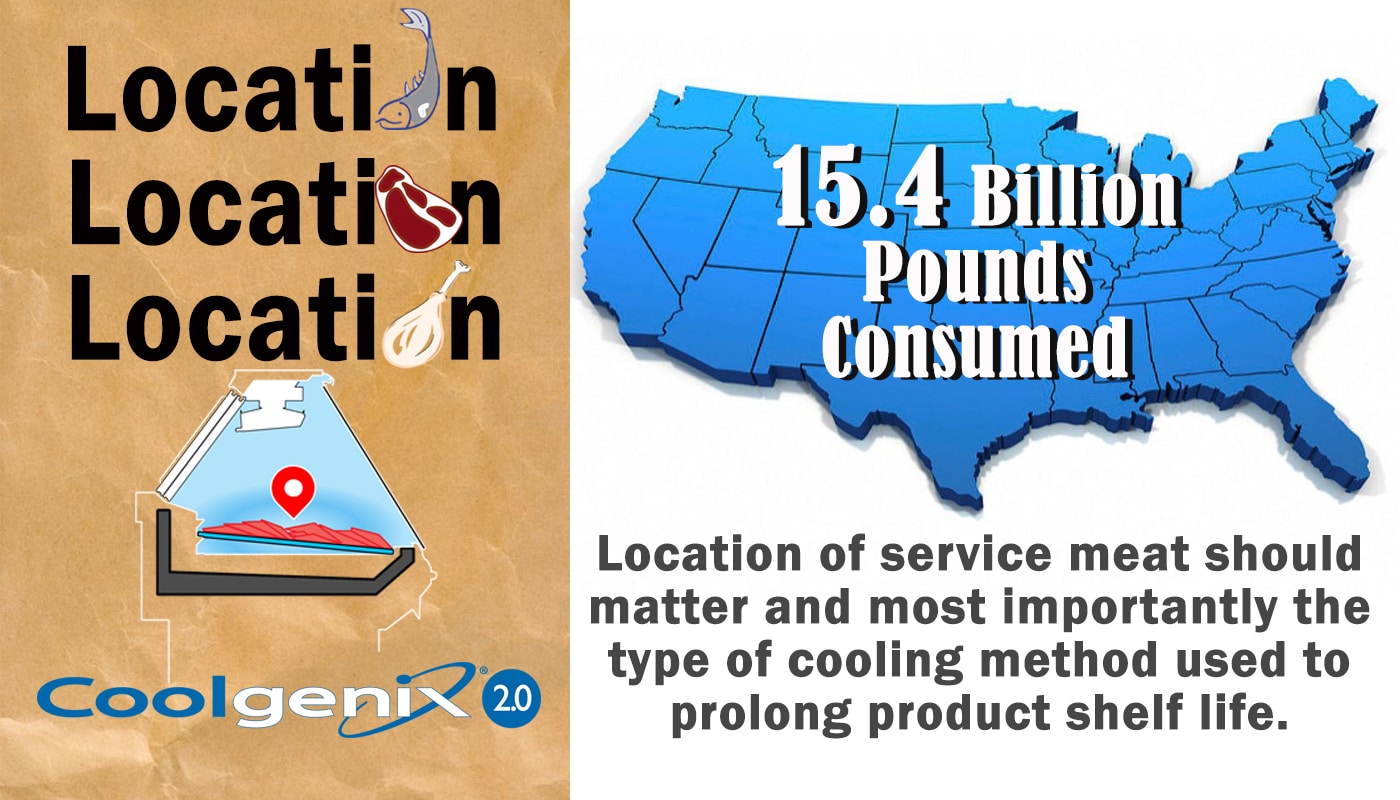Location! Location! Location!

How often have you heard the saying, “the market value of your home is primarily the result of three things — Location … Location … Location!”. Well, as it turns out, the very same statement can be made when it comes to the role that relative humidity plays in determining the best way to store and display fresh meat, poultry, and seafood in refrigerated service display cases. A recent research work, fully accepted and published in the journal Food Control, has verified that fact. The study compared four different refrigerated service display case technologies, each utilizing either convective, conductive, or a combination of the two cooling methods, to determine the effect that each had on product shelf life and microorganism growth on beefsteak and chicken breasts.
Among the findings, the research proved a very important point about location — it’s not how you control the humidity in the display case, but how you control the humidity at the product surface that matters most. Ideally, a refrigerated service case designed to create a “microclimate” at the surface of the product which results in the ability to keep the relative humidity at properly elevated levels and minimize decreased product weight due to moisture losses creates the best environment for the product. The recent study proved that product displayed in a Conduction Cooling Gravity Assist Service Case (CCGA) indeed is the best case for controlling humidity at the product surface. In the study, steaks lost more weight when held in the PCC case (the closest competitor to the CCGA case) and therefore exhibited a higher product shrinkage. Weight loss from meat is an important economic factor because meat is sold on a basis of unit weight.
There’s no better way of putting this in perspective than to point out the impact this has on the meat industry alone. According to the FMI study, “The Power of Meat-2018”, which looked at the U.S. market alone, the total volume of fresh meat consumed was 15.4 billion pounds at a total purchase price of $49.5 billion. Doing the math, that amounts to $3.21 per pound on average. Using the CCGA conduction cooling case with its advantage of 1.1% less shrink than the closest competitor would amount to eliminating 544,500 pounds of meat lost to shrinkage — amounting to the hefty sum of nearly $1.75 million left on the table — and all of this without even considering the additional impact of adding poultry and seafood to the mix.
The Food Control study concluded that the Conduction Cooling Gravity Assist Service Case, the Hillphoenix SSGC Coolgenix® case, utilizing pulse-flow coolant control, through its creation of a microclimate controlling temperature and relative humidity at the product’s surface, was superior to the other three technologies studied in their ability to create a favorable climate for the product integrity and safety of meat products.
Next time you’re considering a purchase of refrigerated service display cases for meat, poultry, and seafood, don’t forget — Location … Location … Location!